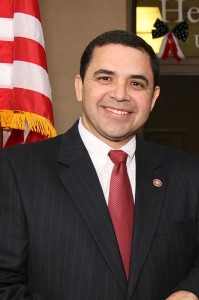WHAT YOU NEED TO KNOW ABOUT RAISING THE DEBT CEILING
Written by Post Public Information Representative, Jul 19, 2011, 0 Comments
Washington, D.C. – In the past weeks, lawmakers on both sides of the aisle have had several intense negotiations surrounding raising the debt limit. Economic experts agree that the United States must both raise the ceiling in order to pay our incurred debt and act to reduce spending. Failing to raise the debt ceiling would have catastrophic global economic impacts and would plunge our economy back into a deep recession.
I want to take this opportunity to clarify what exactly the debate is about and to bust some myths that have been pushed by both sides.
What is the Debt Limit?
The debt limit is a statutory cap on the amount of debt the federal government borrows. It applies to federal debt such as U.S. bonds and Treasury Bills. This debt is owned by creditors such as taxpayers, pension funds and foreign governments. In essence, it is money the country has borrowed to operate and must eventually pay.
Raising our nation’s debt limit is not a new issue. In 1917, as the United States entered into World War I, Congress authorized the Department of Treasury to finance the war, but placed a limit on the amount of debt that could be taken. Since 1980, the debt ceiling has been raised 39 times. Our debt limit has been increased in increments and has never been politicized or held hostage to accomplish ideological goals.
Recent Years
Raising the debt ceiling has been a non-partisan issue. President Ronald Reagan, a Republican, raised the debt ceiling 17 times, the most of any president.
In the 1990s, the debt limit was raised four times under President Bill Clinton and since 2001, the debt limit has been increased 10 times, including seven times under President George W. Bush and three times under President Barack Obama. Not only have presidents of both parties raised the debt limit, but members of Congress from both parties have voted with them. Republican leadership including Speaker John Boehner and Majority Whip Eric Cantor have voted twice to raise the debt limit.
Debunking Debt Ceiling Myths
Not raising the debt ceiling is a way to control future government spending.
This is not true. We’ve heard some say that refusing to raise the debt ceiling is like ‘cutting up America’s credit card’, but a more appropriate analogy would be cutting up our credit card bill. Failing to raise the debt ceiling amounts to a refusal to pay the bills our country has already incurred – which not only sets a terrible example for our children – it also would lead to a credit rating downgrade, leading to higher interest rates and actually increasing our deficit.
Americans will be unaffected if the U.S. defaults – it won’t have a significant impact on me.
False. If the United States does not pay its owed debt by Aug. 2, the Treasury Department will be forced to prioritize payments and pick ‘winners and losers’. On Aug. 3, Social Security checks that are supposed to be sent out to beneficiaries are at risk if the debt ceiling is not raised. As the school year begins in August, many incoming college students will be relying on their Pell Grants to pay for their education expenses – this may not get funded. Even funding Military Active Duty Pay, the FBI and prison systems would be at risk for payment. Every month, the Department of Treasury makes 80 million payments and every one – from veterans to the Federal Highway Administration – will be affected, including me and you.
Failure to Raise the Debt Ceiling has been dramatized.
Incorrect. Third-party onlookers have all come out highlighting the direct risks to our economy, global markets and creditability. Rating agencies such as Standard & Poor’s, Fitch, and Moody’s agree that the U.S. sovereign rating will be downgraded as a result of failure to raise the debt limit. The International Monetary Fund Chief recently warned that if the U.S. fails to raise its borrowing limit, “nasty consequences” are to follow. Business organizations, totaling 470, including the Chamber of Commerce and National Association of Manufacturers, sent a letter to Congress encouraging the “U.S. government to make good on its financial obligations … .” Raising the debt ceiling is not political banter – it’s a global issue that everyone is watching.
The Truth
I believe our situation is best summed up by President Ronald Reagan, who wrote to then-Senate Majority Leader Howard Baker:
“The full consequences of a default, or even the serious prospect of default by the United States are impossible to predict and awesome to contemplate.”
Not raising the debt ceiling would amount to playing ‘chicken’ with our 401Ks, mortgages, pension funds, unemployment benefits, social security payments and tax refunds to small businesses. It would not only be irresponsible, it would cause self-inflicted global financial wreckage that neither the U.S. nor the world can afford.
I continue to strive to serve the American people, especially the constituents of the 28th District of Texas. I believe in responsible spending cuts for our future deficits and I cannot allow our country to default on its debt that has been incurred during the past 16 presidencies.
I will stand for what’s right and not for what’s in the best interest of a special few.


